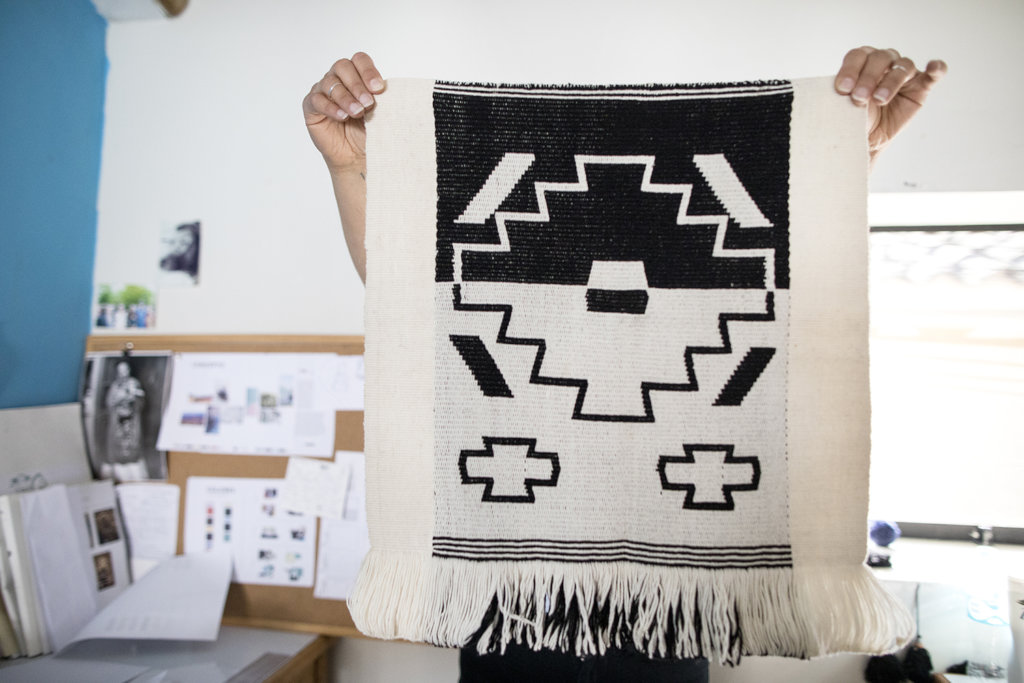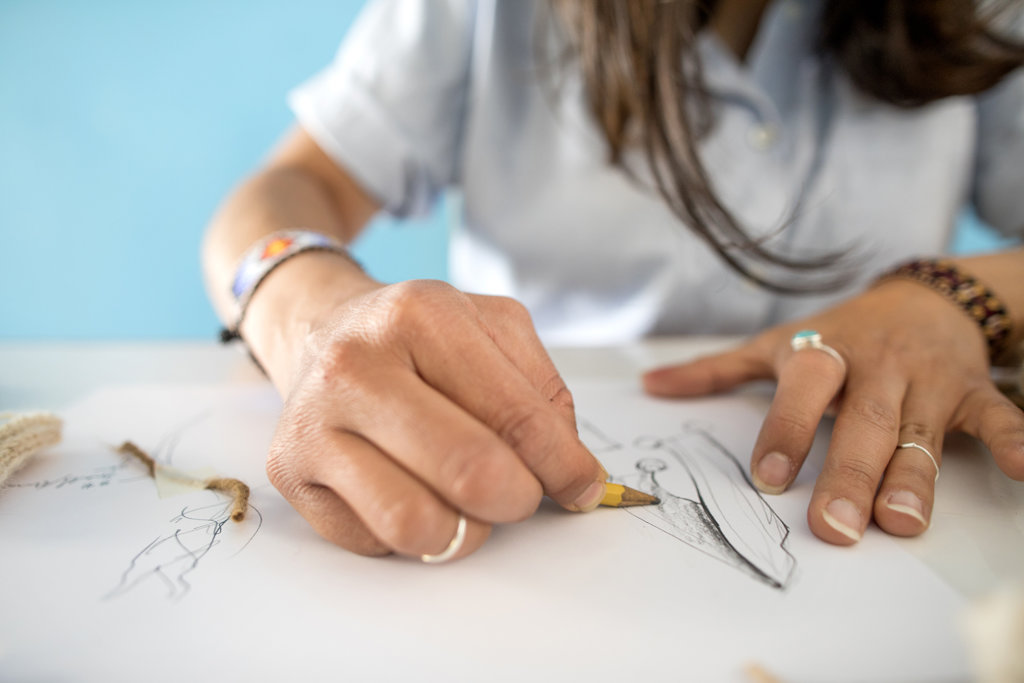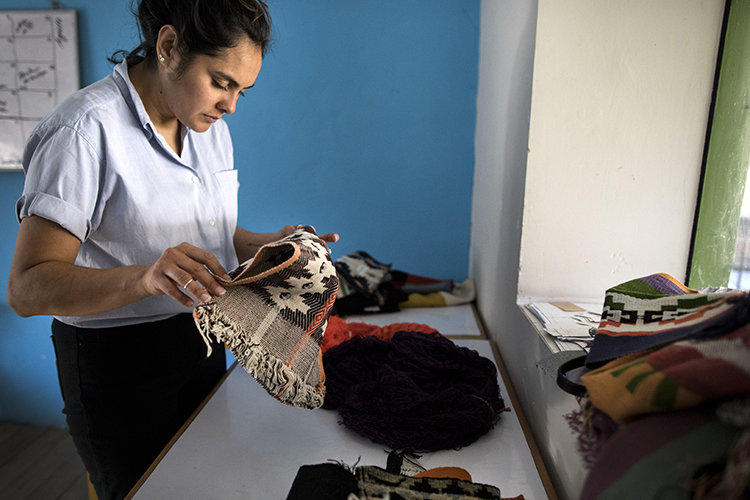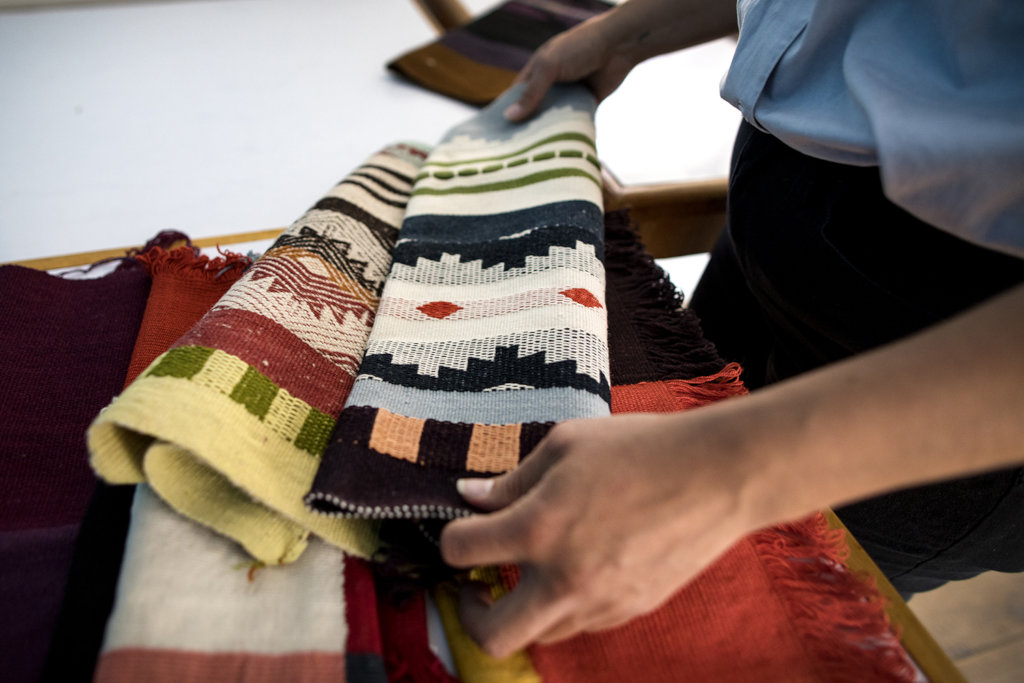By Veronica Levy | Marketing and Communications Coordinator
Once upon a time, in the early stages of Awamaki’s development, we sold only textiles; we carried none of the bags, pillowcases, or other finished products that line our shelves today. While the raw textiles were beautiful, we wondered if they could be better showcased with modern silhouettes created explicitly for traditional-style textiles. Enter Awamaki Lab, an experimental initiative begun in 2010 to connect artisans with different international designers to create modern pieces with our partner artisans.
These designers implemented their vision throughout a 4-12 month residency to create products that would resonate with a global market. Many of the donors to this project helped us get that project off the ground, providing funding for sewing machines, materials, design training and other startup essentials. We will be forever indebted to you for those contributions, as without them, and without you, we wouldn’t have been able to begin to transform traditional textiles into the contemporary Andean products that provide our artisans with their livelihood today.
However, while Awamaki Lab helped Awamaki get closer to our current style and state, the rapid turnover of designers left something wanting: consistency and time to build a strong relationship between designer and artisans.
Realizing the importance of a strong relationship to effective artisan collaboration, Awamaki decided to hire one head designer for a longer period of time in 2017: Alejandra Carrillo-Muñoz. Today, we can take volunteer designers who work with Alejandra under her vision, cultivating a stronger collaborative process, challenging our partner cooperatives with new techniques that will take them far, and better incorporating traditional Andean techniques and symbols into products. Alejandra has been working with us for 3 years now and we can see the expansion in our collections, the quality of the products, and the engagement of our partner artisans as they are now ever more able to sustain their families through the income earned with Awamaki.
For this report we wanted to share an interview we did with Alejandra, in which she expresses her passions, challenges and the design choices that take place in the realm of artisan collaboration. We hope to inform you about the current state of our project as we come close to being a self-sustaining project for which product sales can cover the cost of operation--as has been the goal all along.
Veronica: When you first began working with Awamaki, what were some of the challenges you encountered?
Alejandra: A very common challenge amongst this type of work is understanding that to respectfully approximate yourself to the communities, it takes time; time to learn from the women, to allow them to learn from you, for trust to be built, for a relationship to be formed.
Veronica: Please describe how your relationship with the artisans has grown over time. How important is it to develop a strong relationship, and how has that affected the design process?
Alejandra: I knew going in that not knowing Quechua would be a challenge when it came to communicating and exchanging ideas with the artisans. However, very human interactions of maybe even attempting the language, sharing a few laughs together, being present in the communities when it came time to crafting the textiles, or simply spending time together in general just builds strong bonds. In doing so, we really did create a shared space in which to experiment with creative techniques where we combined contemporary concepts using the extensive knowledge and experience they possess as weavers. We’re really proud of that and we think it shows in our designs!
Veronica: How do you think being able to work long-term with the artisans has affected the design process?
Alejandra: What has been revolutionary for our designs has been to involve the artisans in the creative process. Our most recent 2019 Kay Pacha collection is an example of this. The process began with a concept that originates in the artisan communities and it’s through the artisan communities that we then retrieved the design elements we chose to work with.
Veronica: What are some of the ways you’ve been able to incorporate traditional Andean symbols and techniques into modern designs? Could you expand a little about some of these designs and their significance?
Alejandra: We strive for a design process that starts and ends in the very communities we work with. I often find myself studying textiles that the artisans have woven and then inquire as to the significance of the symbols and the findings are amazing. My favorite was a piece that looked so modern and contemporary that I was surprised to find it represented steps or stairs. This ancient textile design inspired the concept for the 2018 Cielo y Tierra collection and was included in some of our key pieces.
Veronica: What are some of the most memorable things you have learned from the artisans while working with them?
Alejandra: I’m continually in awe of their innate talent. I enjoy nothing more than being in the communities and seeing the designs come to life; from a strand of yarn to a knitted product or a woven textile. These artisans are mathematicians, engineers, creators and makers! Seeing them in action is everything!
Veronica: What are some of the outcomes that emerged from a collaborative process in terms of design choices?
Alejandra: The best example is from the most recent Kay Pacha collection. In this case, the artisans were asked to interpret a prized symbol, the ‘chakana’. The interpretations varied from community to community and from artisan to artisan. This was a way of visually collecting information as to their perception of the symbol and also, a way of including their creative interpretations within our collection.
Veronica: Is there anything else you would like to add about the design process or working closely with the artisans?
Alejandra: I definitely think that our work is most successful when it is inclusive and collective. Acknowledging that each team member, whether in the office or in the artisan communities, possess certain strengths, allows us to work more efficiently. There have been instances where knitters have suggested particular finishes on product or other times that weavers have offered better approaches to composing a particular figure on a textile. Other times, it is us providing quality control or color theory workshop. It takes all of us to create beautiful and quality product.
Overall, hiring Alejandra has allowed for a stronger designer-artisan relationship, which translates to a more collaborative design process. Now, we take a look at how Alejandra’s relationship with our partner artisans has transformed both our style and Awamaki itself. We are currently in the making of our 2020 collection and we can see how the trust that has been built between Alejandra and our partner artinsas is reflected in their creations.
Thank you for all of your support!
Links:
By Veronica Levy | Marketing and Communications Coordinator
By Emily Radek | Marketing and Communications
Project reports on GlobalGiving are posted directly to globalgiving.org by Project Leaders as they are completed, generally every 3-4 months. To protect the integrity of these documents, GlobalGiving does not alter them; therefore you may find some language or formatting issues.
If you donate to this project or have donated to this project, you can recieve an email when this project posts a report. You can also subscribe for reports without donating.



